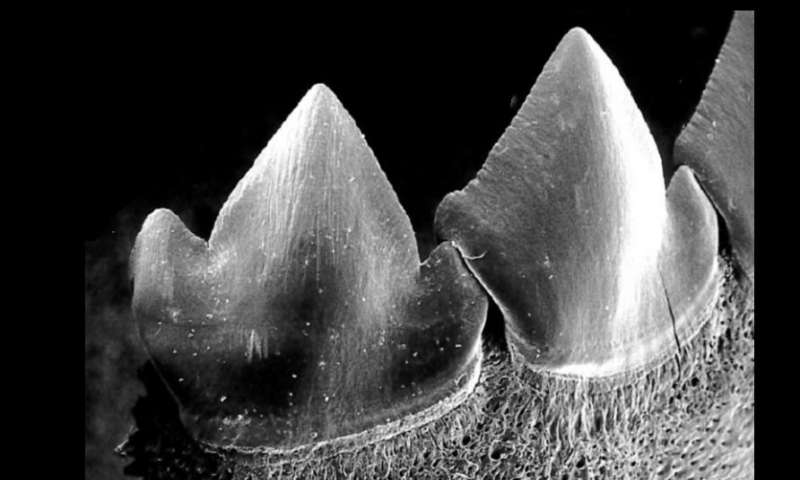Piranhas are known for their razor-sharp teeth and relentless bite (the word piranha literally translates to “tooth fish” in the Brazilian language Tupí). These features are essential so that the fish can tear off flesh from its prey, but this also means that their teeth can wear down easily. A new study found that piranhas replace their teeth regularly — and they do so by replacing all their teeth from one side of the mouth at once.

For some time, biologists have suspected that piranhas lose all their teeth from one side of the mouth to replace dulled dentures with new ones. This hypothesis has always been difficult to confirm as no has ever caught a specimen with a missing set of teeth.
To investigate, Adam Summers, a professor of biology and of aquatic and fishery sciences at the University of Washington Friday Harbor Laboratories on San Juan Island, had to think outside the box. His team performed a CT scan on 93 piranha specimens from 40 different species, which revealed the contours and positioning of their teeth.
The researchers also matched teeth development with hereditary information for each species in order to understand their evolutionary relationships with one another.
This analysis revealed that the teeth on each side were interlocked together, forming two strong blocks within the mouth.
“When one tooth wears down, it becomes hard to replace just one,” lead author Matthew Kolmann, a postdoctoral researcher at George Washington University. “Once you link teeth together, if one wears too much, it becomes like a missing link in an assembly line. They all have to work together in a coordinated way.”

This interlocked arrangement allows the fish to distribute stress all over their teeth when biting hard. In a 2012 study in Scientific Reports, researchers found that black (or redeye) piranhas (Serrasalmus rhombeus)—the largest of modern species—bite with a maximum force of 72 pounds. That’s three times their own body weight, which is why the interlocking teeth must be so handy. However, there’s a tradeoff: they have to replace their entire set of teeth all at once.
“With interlocking teeth, the fish go from having one sharp tooth that can crack a nut or cut through flesh to a whole battery of teeth,” said co-author Karly Cohen, a UW biology doctoral student. “Among piranhas and pacus there’s a lot of diversity in how the teeth lock together, and it seems to relate to how the teeth are being used.”

Ultimately, the researchers confirmed that piranhas—and their plant-eating cousins, pacus—do in fact lose and regrow all the teeth on one side of their face multiple times throughout their lives.
“I think in a sense we found a solution to a problem that’s obvious, but no one had articulated before,” said Summers in a statement.
“The teeth form a solid battery that is locked together, and they are all lost at once on one side of the face. The new teeth wear the old ones as ‘hats’ until they are ready to erupt. So, piranhas are never toothless even though they are constantly replacing dull teeth with brand new sharp ones.”
While this news might make piranhas sound even more menacing, the idea that piranhas could rip a human to shreds is a myth propagated by Holywood.


